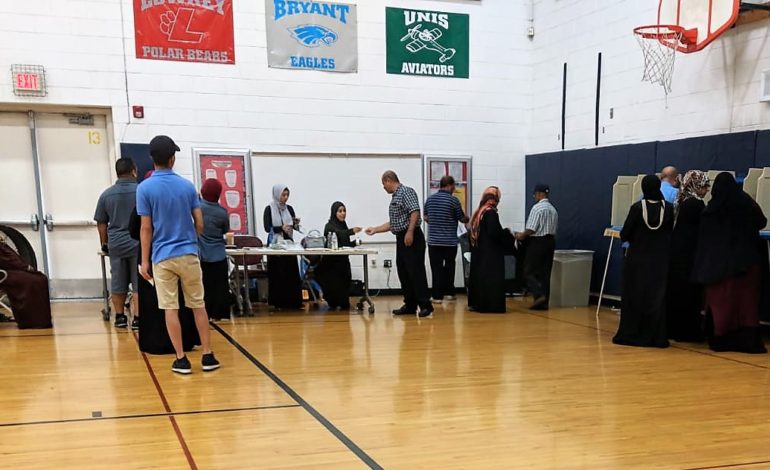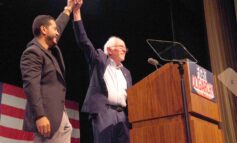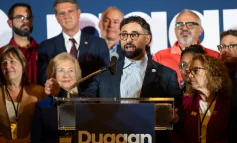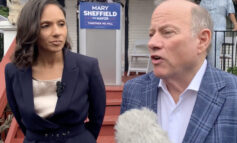DEARBORN— About 2.1 million people out of 7.4 million registered cast their votes in Michigan in the Aug. 7 primaries, with a nearly 28.6 percent voter turnout breaking records going as far back as 1978, according to state election officials.
The results of Michigan’s gubernatorial race mirrored most polls that had former State Senator Gretchen Whitmer winning the Democratic primary and going up against the Republican Bill Schuette, the state’s attorney general, in the November 6 general election.
In the Democratic race, Whitmer, who was endorsed by leading Democratic officials and labor unions, won 52 percent (586,074) of votes, while Bernie Sanders-backed candidate Abdul El-Sayed earned 30 percent (340,560) of votes and businessman Shri Thanedar received 17 percent (199,574) of votes.
In the Republican race, Schuette, who was endorsed by President Trump, received 50 percent (499,837) of the votes, Lieutenant Governor Brian Calley received 25 percent (248,047), State Senator Patrick Colbeck earned 13 percent (129,102) and obstetrician Jim Hines received 10 percent (108,263).
About 53 percent of Michigan voters chose a Democratic candidate and 46.5 percent voted for Republican candidates.
In Dearborn, the total voter turnout was 34.4 percent, which was about 5 percent higher than the state’s turnout. That’s also significantly higher than turn outs in primary elections in 2012 (25.2 percent), 2014 (17.5 percent) and in the 2016 presidential primary election (24.8 percent).
In the Democratic gubernatorial race, 63.6 percent of 61,241 registered voters chose El-Sayed for governor, while nearly 29 percent voted for Whitmer and 7.4 percent voted for Thanedar.
In Dearborn, nearly 24 percent of people voted in the Republican gubernatorial race, while 73 percent voted in the Democratic race.
Among the Republican candidates, 54 percent voted for Schuette, 25 percent voted for Calley, 13.2 percent voted for Colbeck and 7.7 percent voted for Hines.
In Dearborn’s east and Southend precincts, where a high concentration of Arab Americans reside, about 29.8 percent of registered voters headed to the polls, voting heavily Democratic and for El-Sayed.
At McDonald Middle School (Precincts 1 and 2), about 25.5 percent of 2,886 registered voters turned out on Election Day. Nearly 83 percent of them voted for El-Sayed, while 7.5 percent chose Whitmer.
For the Republicans, 3.4 percent voted for Schuette and about 1.2 percent voted for Calley.
At Lowrey Elementary School (Precinct 7), 26.7 percent of 1,864 registered residents voted. About 78.3 percent of those chose El-Sayed, while 6.8 percent voted for Whitmer.
In the Republican race, 3.4 percent voted for Schuette, while 2.2 percent voted for Calley.
At Salina Schools (Precincts 20 and 21), 35.2 percent of 2,384 registered voters came out to the polls. Nearly 70 percent voted for El-Sayed, while about 2.2 percent voted for Whitmer.
At Salina, 0.6 percent (five people) voted for Schuette and 0.4 percent (three people) voted for Calley.
In Dearborn’s west end, where the voter turnout was about 38.2 percent and where residents had previously voted more in favor of Republican candidates, the votes were more evenly split between the Democratic and Republican candidates.
At Snow Elementary School (Precincts 25 and 26), 37.3 percent of 3,120 registered voters headed to the polls. El-Sayed and Whitmer each received nearly 27 percent of the votes.
For the Republicans, about 20 percent voted for Schuette, while 8.7 percent voted for Calley.
At First Presbyterian Church (Precincts 31 and 32), about 42 percent of 2,753 registered voters went out to the polls.
About 38.8 percent of voters chose El-Sayed and about 22.5 percent voted for Whitmer. In the Republican race, about 16.8 percent voted for Schuette, while Calley received 8.7 percent of votes.

Michigan and Dearborn Voters turnout August 7, 2018






Leave a Reply